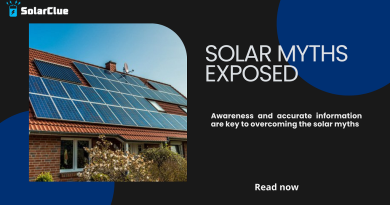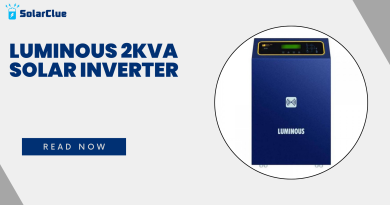Solar Panel Installation Checklist for New Buyers
Are you considering switching to solar energy but unsure where to start? With the increasing popularity of renewable energy, especially solar, it’s crucial to get it right the first time. This comprehensive guide is designed to walk new buyers through the most essential steps for a seamless solar panel installation experience. Our aim is to help you make informed decisions, save money, and enjoy the full benefits of solar power systems.
Why Choose Solar Energy?
Solar energy is clean, sustainable, and increasingly cost-effective. Homeowners and businesses are turning to solar power to reduce energy bills and their carbon footprint. If you’re exploring renewable energy, solar is a top choice for long-term savings and eco-friendliness.
1. Determine Your Energy Needs
Before investing in a solar panel, assess your current energy consumption. Look at past electricity bills to determine your monthly usage in kilowatt-hours (kWh). This helps in designing a solar power system that matches your needs.
2. Conduct a Roof Inspection
The health and structure of your roof are vital. Make sure it’s in good condition and gets plenty of sunlight throughout the day. A professional site inspection will help evaluate roof direction, tilt, and shading which impact solar panel installation efficiency.
3. Choose the Right Type of Solar Panels
There are three main types: monocrystalline, polycrystalline, and thin-film. Each has its pros and cons. Choose the one that best suits your roof, budget, and energy goals. Most homeowners opt for monocrystalline due to high efficiency and aesthetics.
4. Understand the Components of a Solar Power System
A complete solar power system includes:
- Solar panels
- Inverter (converts DC to AC)
- Mounting structure
- Battery storage (optional)
- Monitoring system Understanding these parts helps you communicate effectively with installers.
5. Get Multiple Quotes
Don’t settle on the first offer. Reach out to several certified installers for quotes. Compare system quality, warranties, pricing, and services included. This ensures you get the best value for your money.
6. Check for Certification and Licensing
Ensure your installer is licensed and certified. Look for MNRE (Ministry of New and Renewable Energy) approved vendors in India. This guarantees a standard of service and makes you eligible for government subsidies.
7. Explore Incentives and Subsidies
India offers several financial incentives for installing solar panel systems, including:
- Central financial assistance (CFA)
- State-specific subsidies
- Net metering benefits These can significantly reduce your upfront costs.
8. Understand Net Metering
Net metering allows you to send excess solar power back to the grid in exchange for credits. This can offset your electricity costs and maximize returns on your solar energy investment.
9. Plan for Battery Backup (Optional)
Though not essential, a solar battery system can store excess energy for night-time or backup during power outages. This is especially helpful in areas with unreliable grid supply.
10. Review Warranty and Maintenance Plans
Warranties typically cover 20-25 years for panels and 5-10 years for inverters. Ensure you understand what’s covered. Also, check if the company offers regular maintenance services to keep your system performing optimally.

11. Site Assessment and Final Design
Once you’ve chosen your installer, a site assessment will finalize system design. This includes panel layout, wiring plans, inverter location, and grid integration strategy.
12. Installation Timeline and Expectations
Most solar panel installations take 1–3 days. Coordinate with your installer regarding schedule, permits, and any disruption to your routine.
13. Inspection and Grid Connection
After installation, a government or utility inspection ensures everything is up to code. Once approved, your system will be connected to the grid and ready to go live.
14. Monitor Your System
Use the monitoring system to track power generation and usage. Many systems offer mobile apps for real-time monitoring and alerts, helping you optimize solar energy consumption.
15. Understand ROI and Break-even Point
Calculate your system’s return on investment (ROI) based on cost, savings, and subsidies. Most systems break even within 5–7 years, after which you enjoy nearly free electricity.
Conclusion
Switching to solar power is a smart, sustainable investment. With the right planning and a detailed checklist, your solar panel installation journey can be smooth and highly rewarding. This guide empowers you to make informed decisions, ensuring long-term savings and energy independence.
Still have questions or ready to begin your solar journey? Explore more on SolarClue.com and dive into valuable resources at blog.solarclue.com. Your future with renewable energy starts today!
FAQs
Q1. What is the best type of solar panel for homes?
Monocrystalline panels are considered the best due to their high efficiency and sleek appearance.
Q2. How long does it take to install a solar power system?
The actual installing solar panel process takes 1-3 days, depending on the system size and site conditions.
Q3. Can I run my entire home on solar energy?
Yes, if your solar panel system is sized correctly based on your consumption and includes battery backup.
Q4. Are there any maintenance requirements?
Minimal. Periodic cleaning and annual inspections are typically sufficient.
Q5. What happens during cloudy days or at night?
Your system will draw power from the grid or stored battery energy during these times.
Visit SolarClue.com now and take the first sunny step toward a greener tomorrow!



